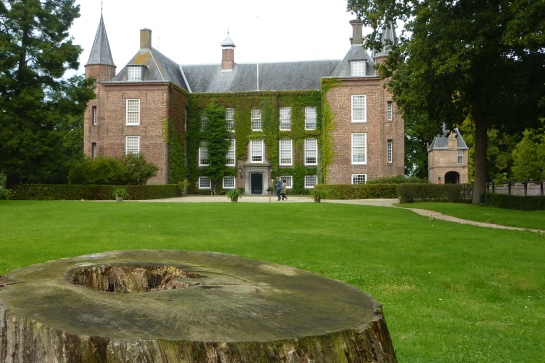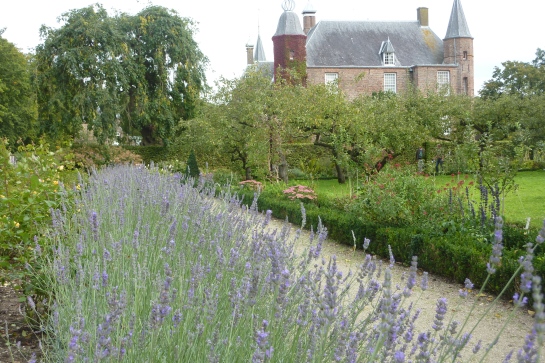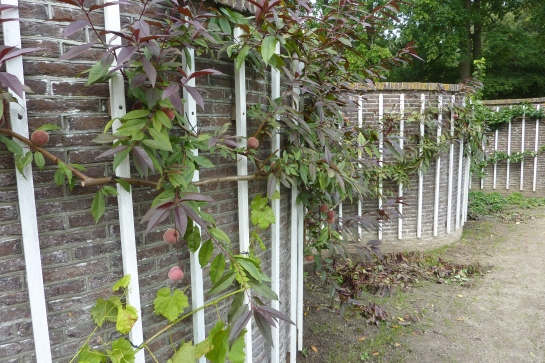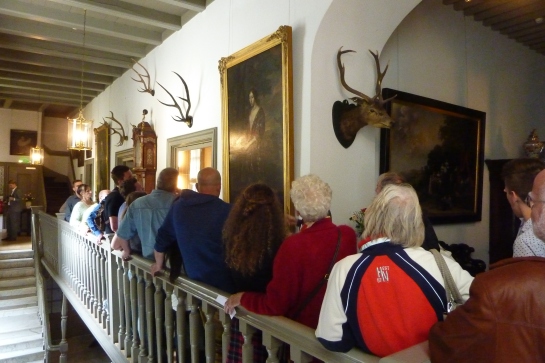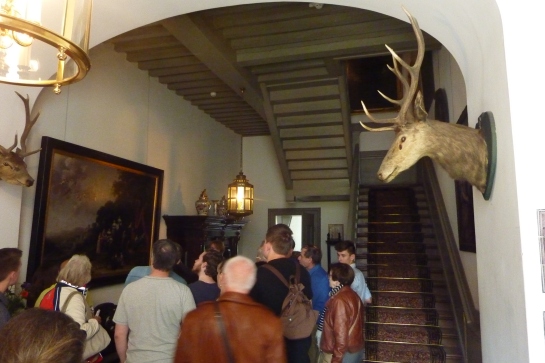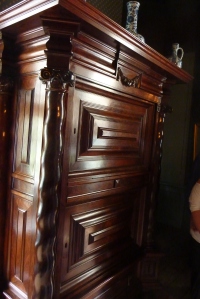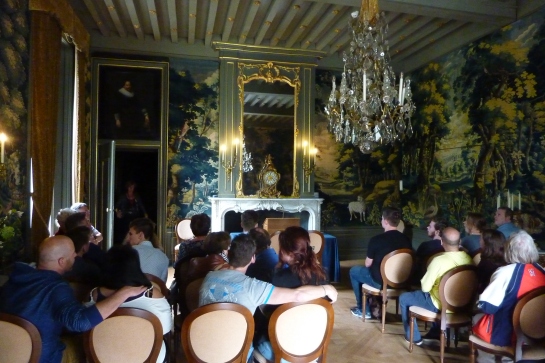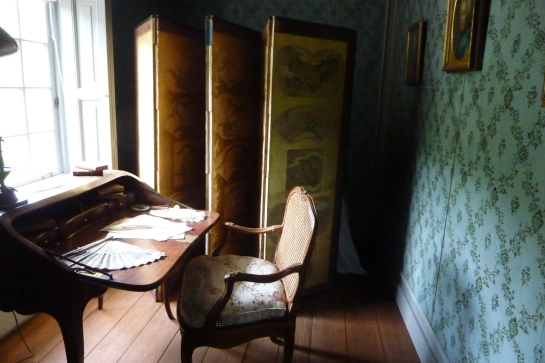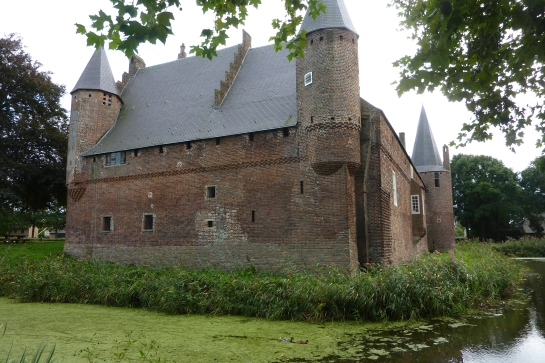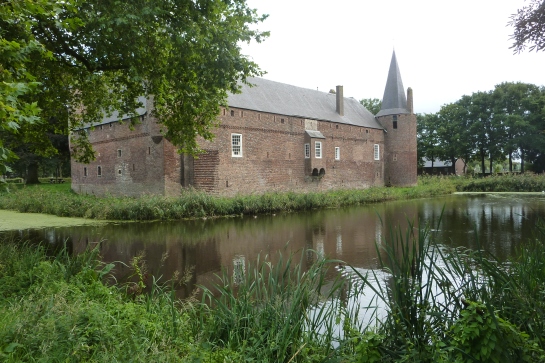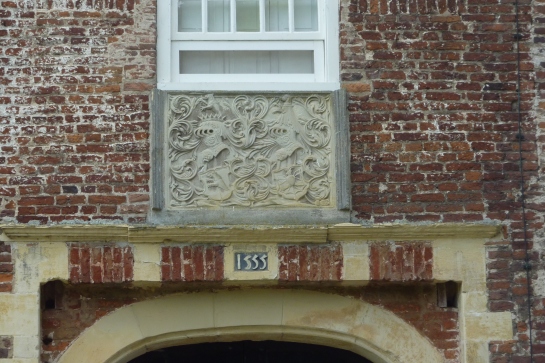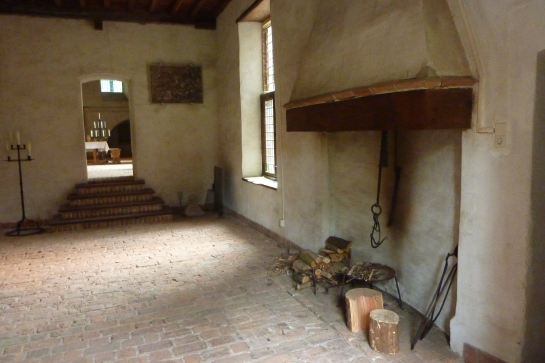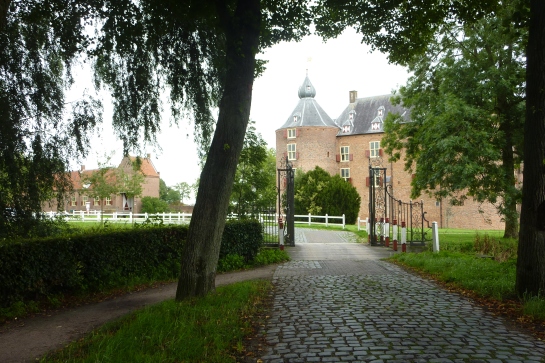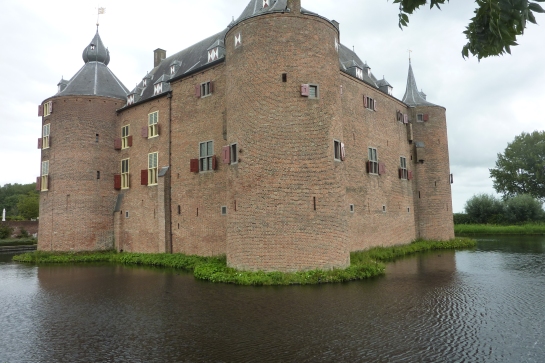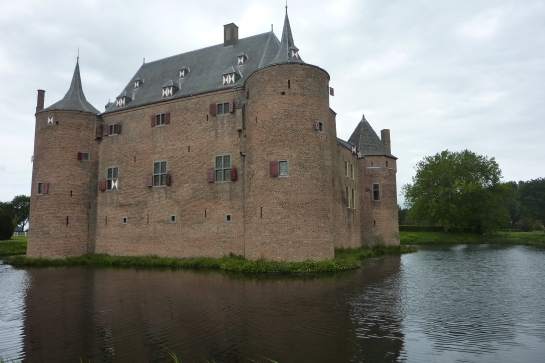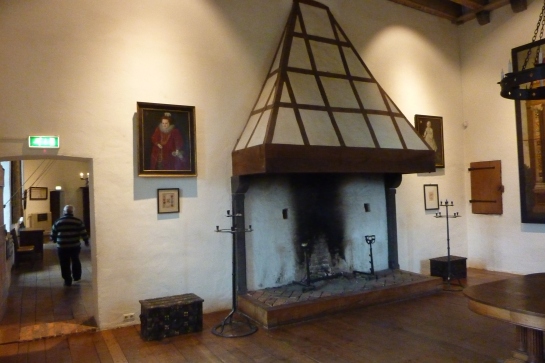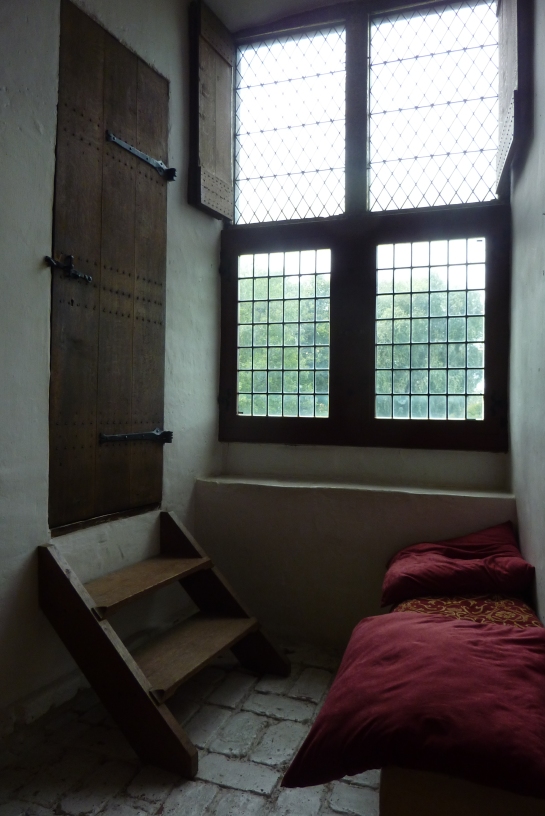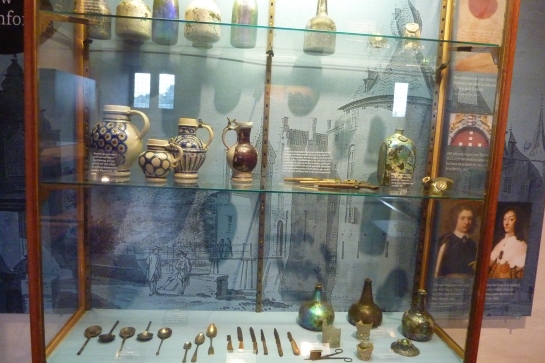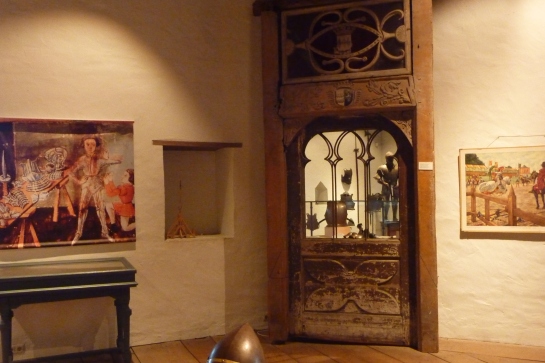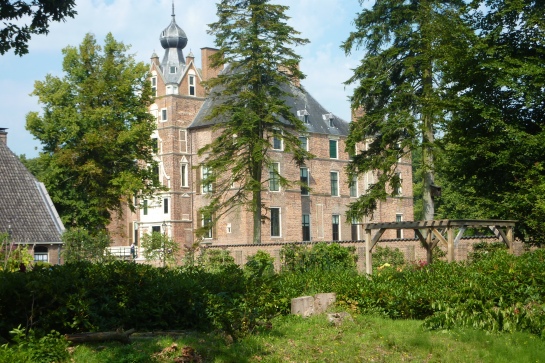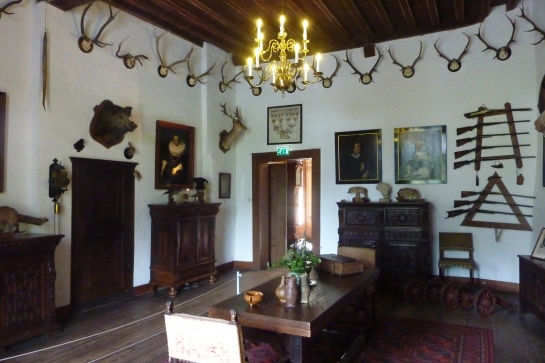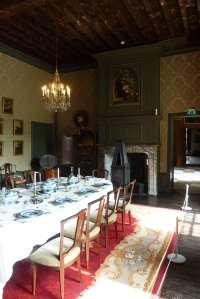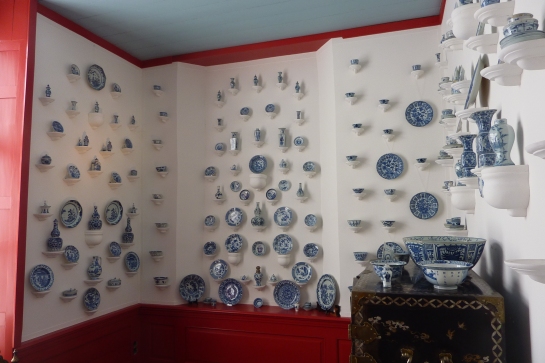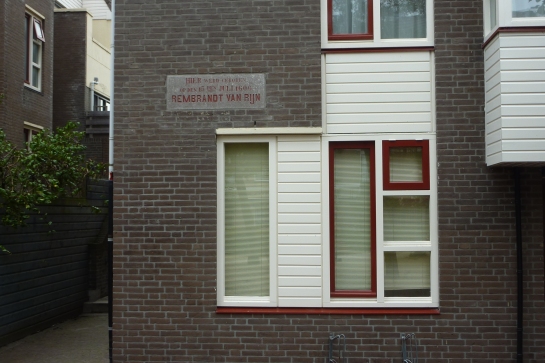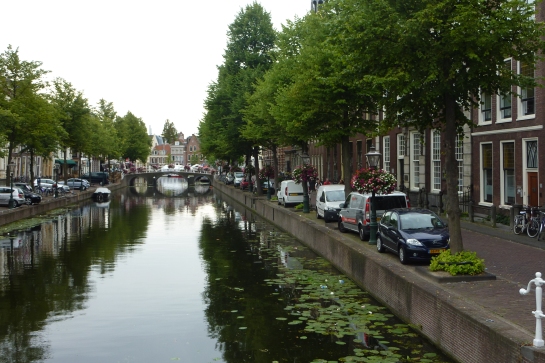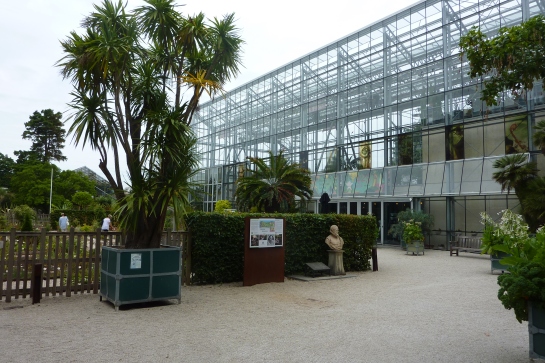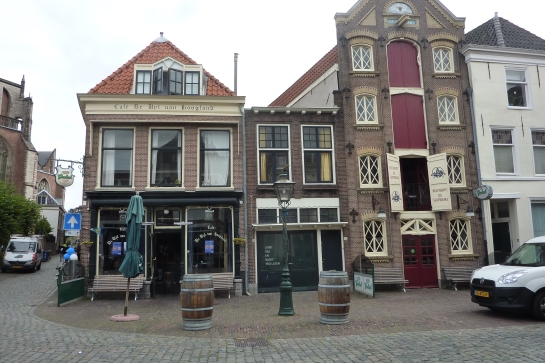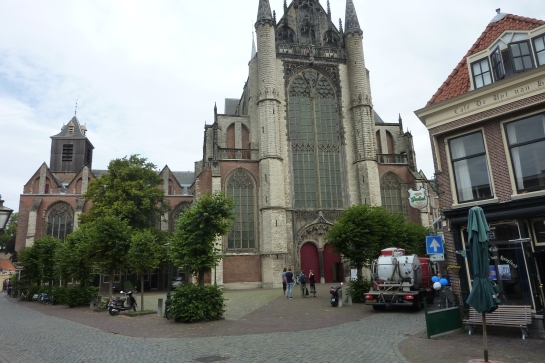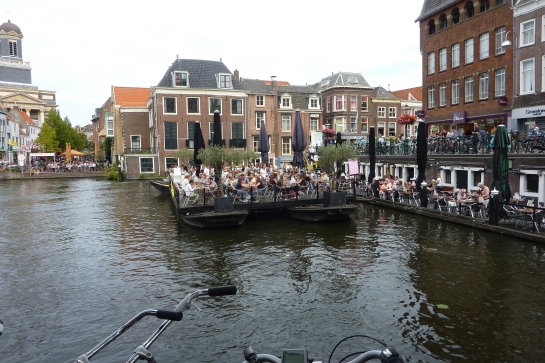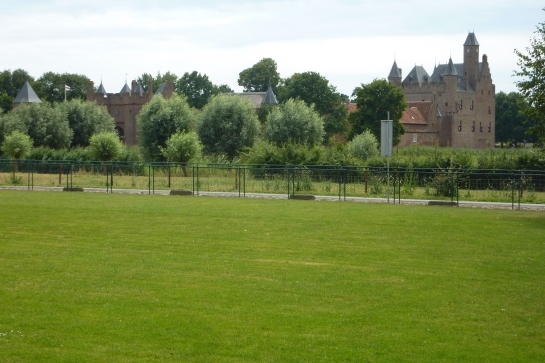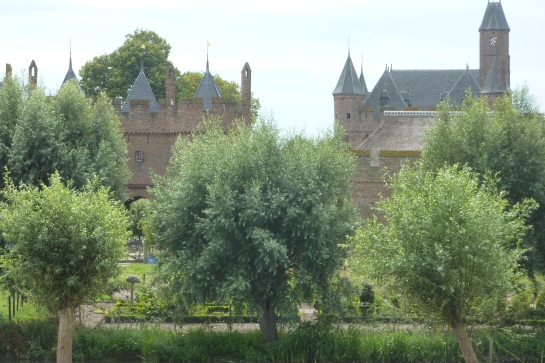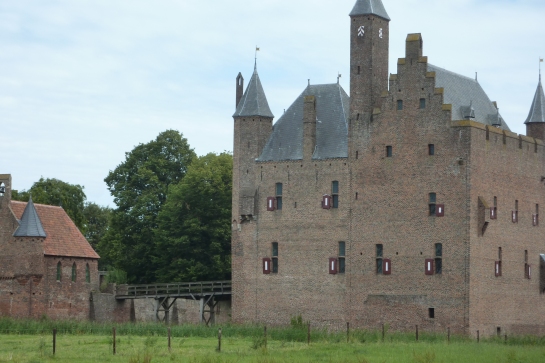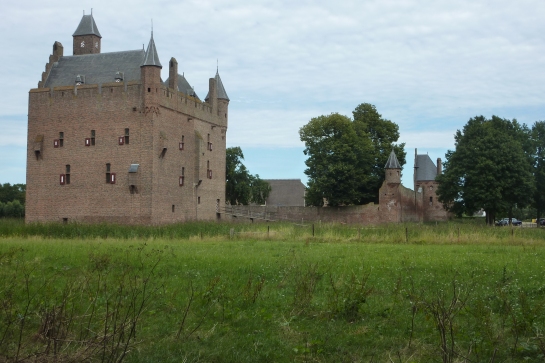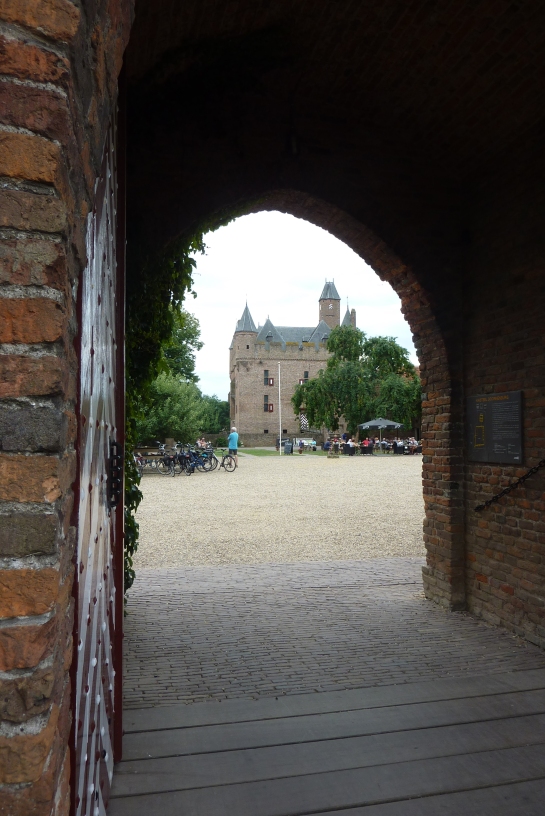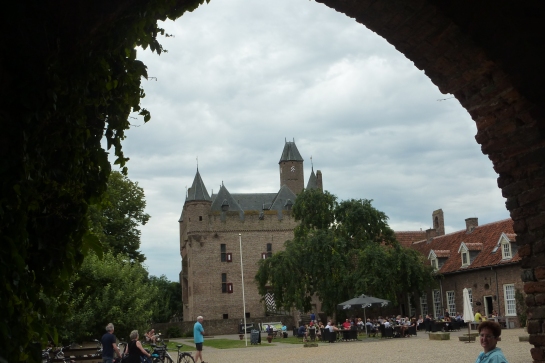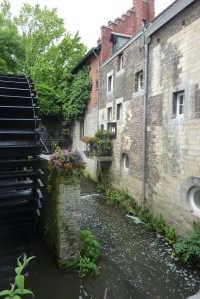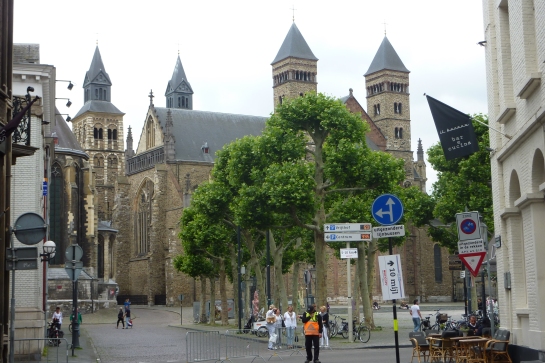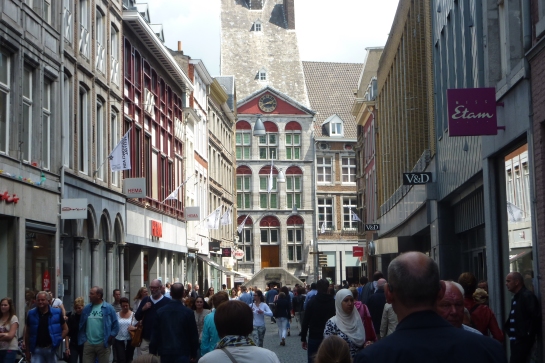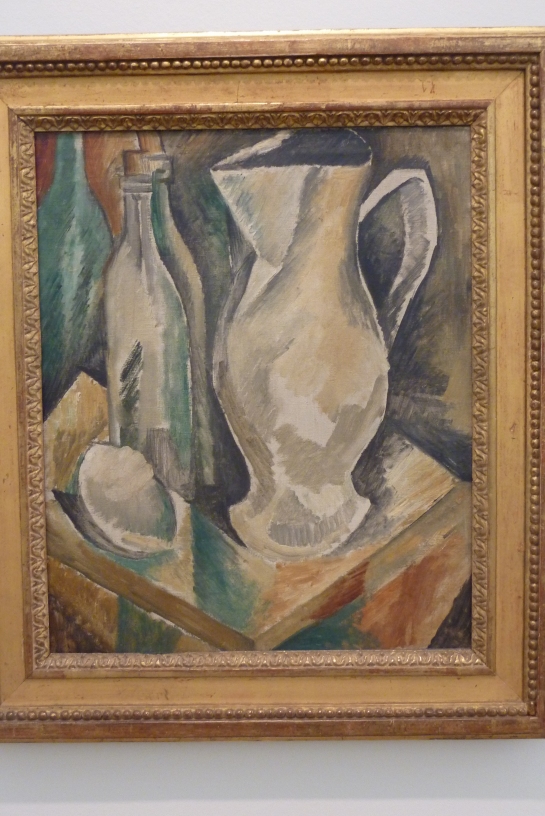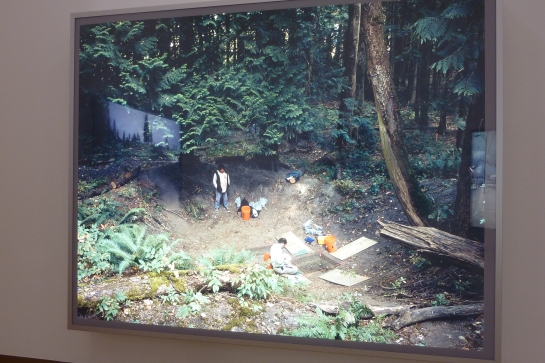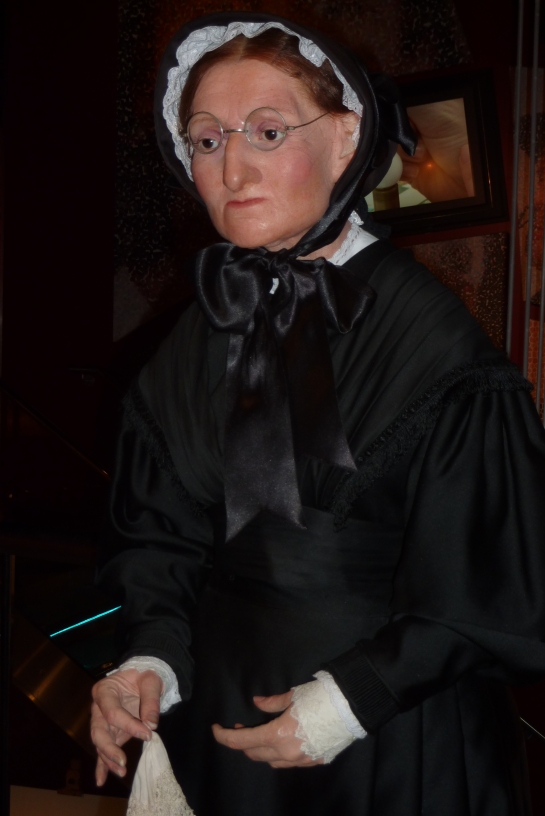This relatively small and nicely rebuilt palace is easy to reach near Utrecht and has a number of nice features to it.

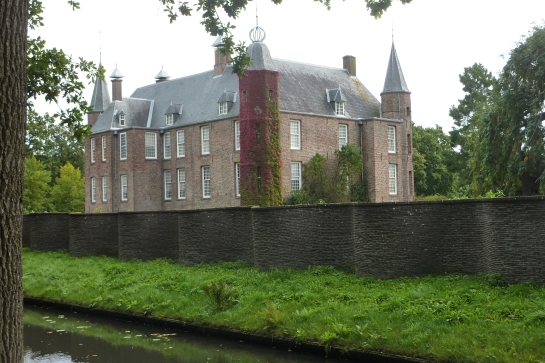 Yes, that dark line is a snaking wall, with a lot of fruit trees on its inner side facing South, soon to be reached …
Yes, that dark line is a snaking wall, with a lot of fruit trees on its inner side facing South, soon to be reached …
On the positive side, the garden and park, which are also quite small, are very beautiful especially with the wide variety of flowers blossoming there even in mid-September.
And here we are at the snake-wall.
In the middle of the 18th century, this was the living place of the later Isabelle de Charrière, better known as Belle de Zuylen, until she became 31 and married the Swiss teacher of her brother. A person of very wide and deep interests and secret studies, she was a forerunner of emancipated women of much later and an author of many learned works written in French. She is one of the main attractions of the palace, which was somewhat rebuilt after her departure.
However, a visit inside is a bit cumbersome as it is only possible as part of a guided tour every hour. My guide was always in a hurry to close the boards inside the windows after her explanations, making taking good photos very difficult with so many in the group, but another guide may not be so hasty.
Otherwise, period furniture and clothing mean mainly the 18th or 19th century here. Paintings on the walls are huge in size and numbers, but are only of members of earlier families owning the place except for an older triptych and a really huge tapestry in this room.
This is where the budding ‘writeress’ wrote her letters to her forbidden and much older love, James Boswell, who, by the way, has the language institute of Utrecht University named after him (this is no ad for them, I hardly liked their Dutch language course when I attended).
By the way, guiding is possible in English as I heard another one, but I guess that was a small, special group. My guide was quite lengthy and uninteresting for me in Dutch, which was a bit of a let-down for the entrance fee of €8.5. Still, some nice pieces and the garden outside make it a nice place to visit, if not necessarily inside.
by P.S.



